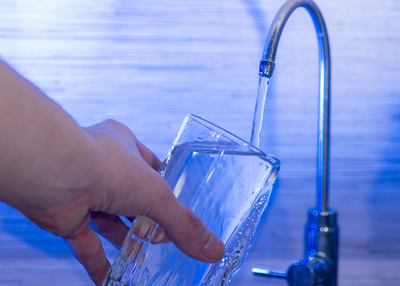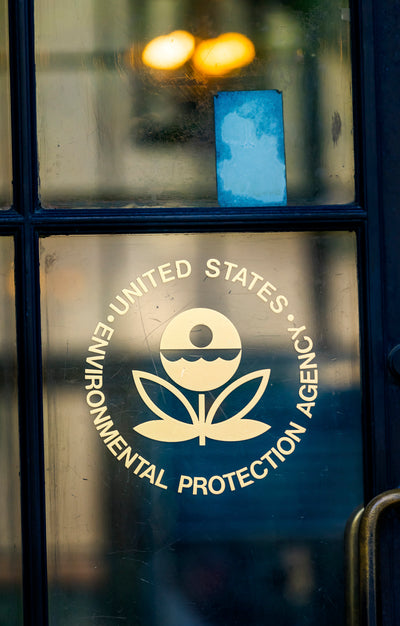Water Quality InformationWritten By Actual Experts
RSSWhat You Need To Know About PFAS "Forever Chemicals"

What is a "Safe Level" for PFAS in Drinking Water?

What EPA's New PFAS Guidelines Mean For You

Analies Dyjak, M.A. | Head of Policy and Perspectives
The Environmental Protection Agency (EPA) just announced a dramatic decrease in what they’re considering a “safe” level of certain PFAS in drinking water. EPA’s recent announcement reiterates just how serious the PFAS crisis has become in the U.S. What do these new “safe levels” mean for you and what action do you need to take?
EPA's New Guidelines for PFAS
**UPDATE: On April 10, 2024, the US EPA has announced drinking water standards to limit exposure to 6 types of PFAS chemicals.
In June 2022, EPA proposed reducing the current Health Advisory Level of 70 parts per trillion for PFOA and PFOS combined, to 0.004 parts per trillion for PFOA and 0.02 parts per trillion for PFOS. This reduction is over 17,000 times lower than what was considered safe by EPA just 6 years ago. EPA also introduced Health Advisory Levels of 10 parts per trillion for GenX and 2,000 parts per trillion for PFBS. It’s important to note that a Health Advisory Level is the amount of a contaminant that is NOT likely to cause negative health impacts. For example, drinking water with PFBS at a concentration above 2,000 parts per trillion could cause adverse health effects, according to EPA.
EPA admits that these super low levels could be very difficult to identify with current methods of detection: “It is possible for PFOA or PFOS to be present in drinking water at levels that exceed health advisories even if testing indicates no level of these chemicals” and that PFOA and PFOS can only “be reliably measured using specified analytical methods in appropriate laboratory settings.” While the intention of these new Health Advisory Levels are in good faith, they’re setting up municipal treatment plants to fail - especially those in rural and underfunded communities.
How Will The New PFAS Guidelines Impact You?
The general public likely won’t feel any real impacts for several years. Interim levels, and health advisory levels in general, are entirely non-enforceable. This means that water providers are not legally bound to meet these lower recommendations anytime soon. The goal of health advisories is that they will eventually turn into enforceable standards, which EPA has plans to implement in 2023. The only real impact to public health is that PFAS levels that were once considered “safe” by EPA are now potentially dangerous.
Takeaways and Red Flags
First, these new health advisory levels are unattainable by nearly every single public water utility in the country. Not only will someone (taxpayers) have to pay for new treatment technology, but it could take years if not decades to get new treatment up and running. It’s unclear what will happen to utility providers if they violate this law, or what people are supposed to do while these new guidelines take effect. Second, these new guidelines don’t address the root of the problem. PFAS are still being produced in the U.S., and are still a key ingredient in several consumer products. Even though drinking water has the potential to be addressed, there are hundreds of other ways that people are exposed to PFAS chemicals. Finally, this new change only addresses four of the over 9,000 different PFAS variations that are being found in the environment.
Others Articles We Think You Might Enjoy:New Asbestos Ban Could Increase Use and Release of PFAS Chemicals
Over 60% of Toxic Wastewater Biosolids Are Used to Fertilize Farmland in the U.S.
Things You Should Avoid Pouring Down The Drain:
Water Utility Shuts Down Wells Following 'Concerning Levels' of PFAS

Analies Dyjak, M.A. | Head of Policy and Perspectives
The city of Eau Claire, Wisconsin is in the national spotlight for PFAS contamination in drinking water. The city’s water utility provider shut down half of it's wells due to unsafe levels of PFAS earlier this month. PFAS are a category of harmful contaminants that are known to cause cancer and other dangerous health impacts.
Where Is The PFAS Pollution Coming From?
PFAS pollution has contaminated half of the 16 drinking water wells in the city of Eau Claire. The Wisconsin Department of Natural Resources (DNR) believes that the contamination originated from the Chippewa Valley Regional Airport in Eau Claire. Airports and military bases are known to be a main source of PFAS contamination due to the excessive use of firefighting foam during training activities. PFAS are a key ingredient in firefighting foam because of their ability to act as a surfactant and suppress fire. You might see PFAS referred to as Aqueous Fire Fighting Foam or AFFF in this particular context. Camp Lejeune, McClellan Air Force Base, Pease Air Force Base, and Gerald R. Ford International Airport are some of the more well known incidences of AFFF contamination. There are however several other sources of PFAS that could be contributing to the contamination, including nearby PFAS manufacturing and processing facilities.
How Is Eau Claire Mitigating The Problem?
One of the most difficult hurdles faced by municipalities across the country is what to do with the PFAS once its contaminated a water supply. The Utilities Manager for the City of Eau Claire stated that they’re currently emptying out their wells and dumping contaminated water into “absorption ponds.” These ponds are a temporary solution and are problematic in their own way. PFAS can still seep from the absorption ponds into surrounding soil and groundwater. The utilities manager said in a recent interview that the absorption ponds are located in an area that “should not impact municipal drinking water.” The absorption ponds also don’t take into consideration the health of aquatic species and other organisms in that habitat. PFAS are known to bioaccumulate in fish, which could indirectly affect humans throughout the food chain.
City officials made the decision not to provide bottled water to its residents, and continue to allow them to drink the contaminated water on the grounds that it’s “under the DNR hazard index level” of 20 parts per trillion. Proactive sampling occurred in 2020, which found that Eau Claire wells had detectable levels of PFAS. In 2021 when the hazard index was introduced in the state of Wisconsin, the utility department determined that PFAS were then problematic.
What’s Next For The City of Eau Claire?
There are currently no mitigation plans and several unknowns regarding the next steps for the city of Eau Claire. State and local officials are still unsure of the size of the plume, the direction of the plume, and the levels that they are dealing with. The City of Eau Claire has hired an engineering firm to assist with answering some of these questions as well as a cost estimate for future action. The utilities manager did however say that since removing PFAS-contaminated water, PFAS levels had decreased in 5 of the city wells.
Once PFAS are in a water supply it’s nearly impossible to eliminate all of the contamination. Water treatment plants will simply focus on water that’s actually being consumed by members of a community, which includes purchasing proper filtration technologies. It’s important to note that Eau Claire is not the only municipality that has taken water sources “offline” due to PFAS contamination. The community of Bethany Crest, Delaware was told to only use bottled water for drinking and cooking due to “concerning levels” or PFAS. Many municipalities are testing for PFAS for the very first time, so there’s no way of knowing how long PFAS has been a problem in either of these communities.
Our Take:
The utilities manager in an interview with Wisconsin Public Radio stated that “the city of Eau Claire’s water is safe and always has been.” We’ve seen similar statements from public officials in other states when their water was in fact not safe at all. The mayor of Newark, NJ made a similar statement about lead levels that were almost two times higher than the federal limit, claiming that Newark’s water was not only safe, but “some of the best in New Jersey.” We suggest first taking a look at this Environmental Working Group (EWG) map to see if PFAS have been detected in your area. You may also consider purchasing a filter that removes PFAS contaminants.
Other Articles We Think You Would Enjoy:Water Filters That Remove PFAS Chemicals:
Does My State Regulate PFAS in Drinking Water?
Study: PFAS Detected in Popular Bottled Water Brands
Health Effects Caused by Exposure to PFAS Chemicals







